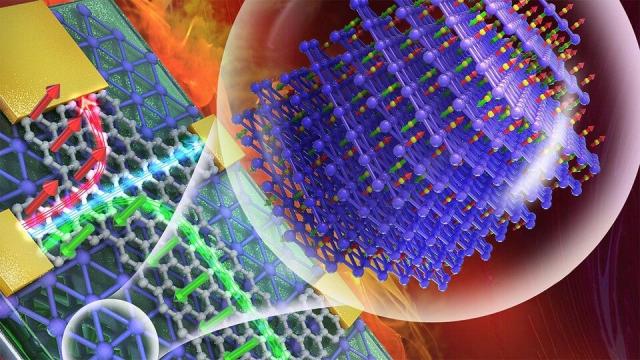Transistors, specifically those made from silicon, are the cornerstone of modern electronics. From toasters to televisions, transistors appear in nearly everything with a circuit. They are also only getting smaller, which is a problem, especially when it comes to energy consumption, heat, and, ironically, total device size. Pack too many transistors into a device, and oddly enough, you start to hit some walls.
Moore’s Law states that the number of transistors we can squeeze into our electronic devices is getting exponentially greater. This trend, however, has to have a limit. The smaller a transistor gets (we’re talking some that are currently only a few nanometres wide), the harder it is to get rid of the waste it generates, and the hotter devices packed with them get, which limits device size. Coupled with the growing demand for faster and smaller electronics, engineers are facing a dilemma. Author Peter A. Dowben, a professor of Physics at the University of Nebraska–Lincoln said in a press release:
“The traditional integrated circuit is facing some serious problems…So you need something that you can shrink smaller, if possible. But above all, you need something that works differently than a silicon transistor, so that you can drop the power consumption a lot.”
Researchers from the University of Buffalo and the University of Nebraska Lincoln teamed up in a new study — published in Advanced Materials — to design a more efficient, non-silicon transistor, which should allow the little semiconductors to keep getting smaller. Transistors typically compute by pushing electrons through a gate: when electrons are flowing through the gate, it’s a 1, and when they’re not, it’s a 0. But Keke He, Jonathan P. Bird, and their research team have cracked a new way to design a transistor by relying on electrons’ spin instead of their flow.
Electrons can spin in one of two directions: up or down. Those directions can, you guessed it, correspond to the 1’s and 0’s of binary code. The research team first started with a layer of graphene that is one layer thick that electrons would flow through. The graphene layer is crucial, as graphene has a unique property that allows electrons to maintain their spin direction for relatively long distances. Underneath the layer of graphene is a layer of chromium oxide.
When a positive voltage is applied, the electrons in the chromium oxide spin up, and the graphene electrons veer to the left. When the voltage is negative, the chromium oxide electrons spin down and the graphene electrons veer right. These two unique configurations create easy-to-detect signals that can correspond to 1’s and 0’s.
Dowben explains that there may be other ways to create similar transistors out there. “Now everybody can get into the game, figuring out how to make the transistor really good and competitive and, indeed, exceed silicon.”
For now, the researchers behind this type of transistor, called a magneto-electric transistor, are excited about its potential to push past silicon’s limits. The study’s press release claims that magneto-electric transistors could reduce the amount of transistors needed to store certain data by “as much as 75%,” which could lead to smaller and cooler devices, but also a purported 5% reduction in global digital energy consumption. That energy reduction estimate is also thanks to the potential for these transistors to remember exactly where their users left off even after being powered down.
Plus, if the pandemic’s taught us anything when it comes to manufacturing tech, it’s that the industry can only push out so much silicon. Magneto-electric transistors are still far off from being industrialized, but semiconductors could always benefit from a new spin on things.
